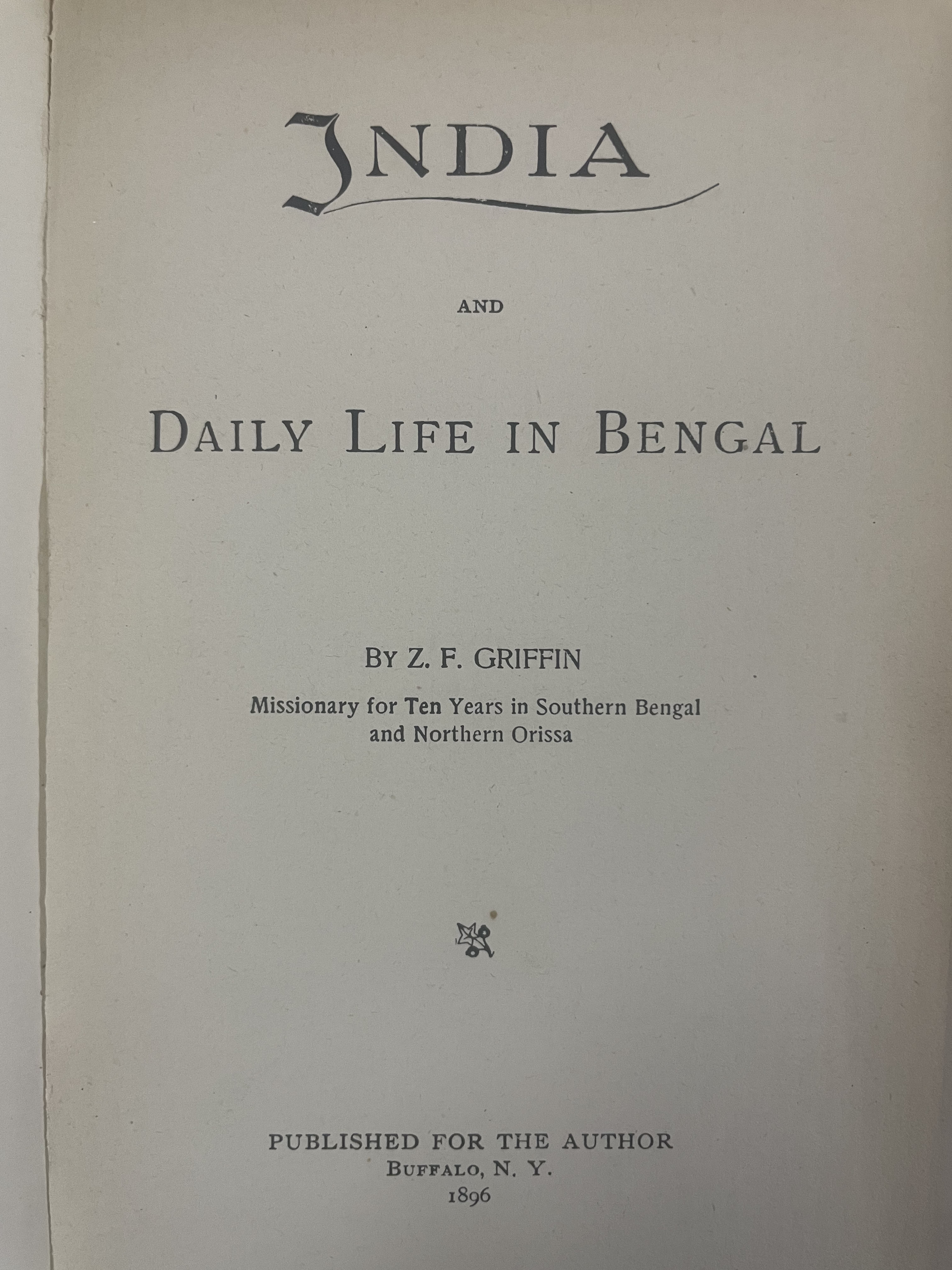India and Daily Life In Bengal

About
Summary
Exquisite
TOC
Details
Related
URL
Images
Overview
India and Daily Life in Bengal by Zebina Flavius Griffin, published in 1912, offers a detailed account of the author's experiences living in Bengal during that time. The book provides insights into various aspects of daily life, culture, and society in Bengal, capturing a snapshot of the region during the early 20th century.
India and Daily Life in Bengal is a comprehensive exploration of the everyday experiences, customs, and social structures prevalent in Bengal during the early 1900s. Zebina Flavius Griffin meticulously documents his observations on various facets of life, providing readers with a glimpse into the cultural landscape of the region.
Importance of Book
Daily Routines: Griffin describes the daily routines of people in Bengal, offering insights into their work, leisure activities, and family life.
Social Customs: The book delves into the social customs and traditions that governed Bengali society, including marriage ceremonies, religious festivals, and community gatherings.
Religious Practices: Griffin explores the religious practices of the people in Bengal, shedding light on their beliefs, rituals, and places of worship.
Economic Activities: The book examines the economic activities that sustained the population, such as agriculture, trade, and craftsmanship.
Role of Women: Griffin discusses the role of women in Bengali society, highlighting their contributions to family life and the challenges they faced.
Cultural Interactions: The book touches upon the cultural interactions between the British and the local population, offering glimpses into the dynamics of colonial society.
Key Themes
Cultural Immersion: Griffin's work emphasizes the importance of immersing oneself in a culture to gain a deeper understanding of its nuances and complexities.
Social Observation: The book showcases the value of keen social observation in capturing the essence of a society and its people.
Cultural Documentation: Griffin's detailed descriptions contribute to the documentation of Bengali culture during a specific period in history.
Cross-Cultural Understanding: By sharing his experiences and observations, Griffin promotes cross-cultural understanding and appreciation.
Historical Context: The book provides valuable historical context for understanding the social, economic, and cultural conditions of Bengal during the early 20th century.
Cultural Significance
Historical Record: India and Daily Life in Bengal serves as a historical record of a specific time and place, offering insights into the lives of people in Bengal during the early 1900s.
Cultural Documentation: Griffin's detailed descriptions contribute to the preservation of Bengali culture and traditions.
Ethnographic Value: The book holds ethnographic value, providing researchers and scholars with valuable information about the social structures, customs, and beliefs of Bengali society.
Comparative Analysis: The book allows for a comparative analysis of Bengali culture with other cultures and societies, both past and present.
Colonial Perspective: Griffin's work offers insights into the perspectives and attitudes of a Western observer towards Indian society during the colonial era.
Effects on Society
Informing Western Perceptions: Griffin's book likely influenced Western perceptions of Bengal and Indian society, shaping attitudes and understanding.
Preserving Cultural Memory: The book has contributed to the preservation of Bengali cultural memory, providing a valuable resource for future generations.
Promoting Cross-Cultural Dialogue: By offering detailed descriptions of Bengali life, the book has the potential to promote cross-cultural dialogue and understanding.
Scholarly Research: India and Daily Life in Bengal remains an important source for scholarly research on Bengali history, society, and culture.
Understanding Colonialism: The book offers insights into the impact of colonialism on Indian society and the cultural interactions between the colonizers and the colonized.
Conclusion
Griffin's work is important because it provides a window into a specific time and place, capturing the essence of daily life in Bengal during the early 20th century. His observations on the social, cultural, and economic aspects of Bengali society offer valuable insights into a region undergoing significant change. The book serves as a reminder of the importance of cultural documentation and cross-cultural understanding in an ever-changing world.
Title
India and Daily Life In Bengal
Author
Z F Griffin
Name of Publisher
Buffalo New York
Publish Date
1896
Subject
Account of life in Bengal during the late 19th century
Vintage
1801-1900
Number of Pages
184
Category
India
Sub Category
Social Sciences
Rarity
RARE
